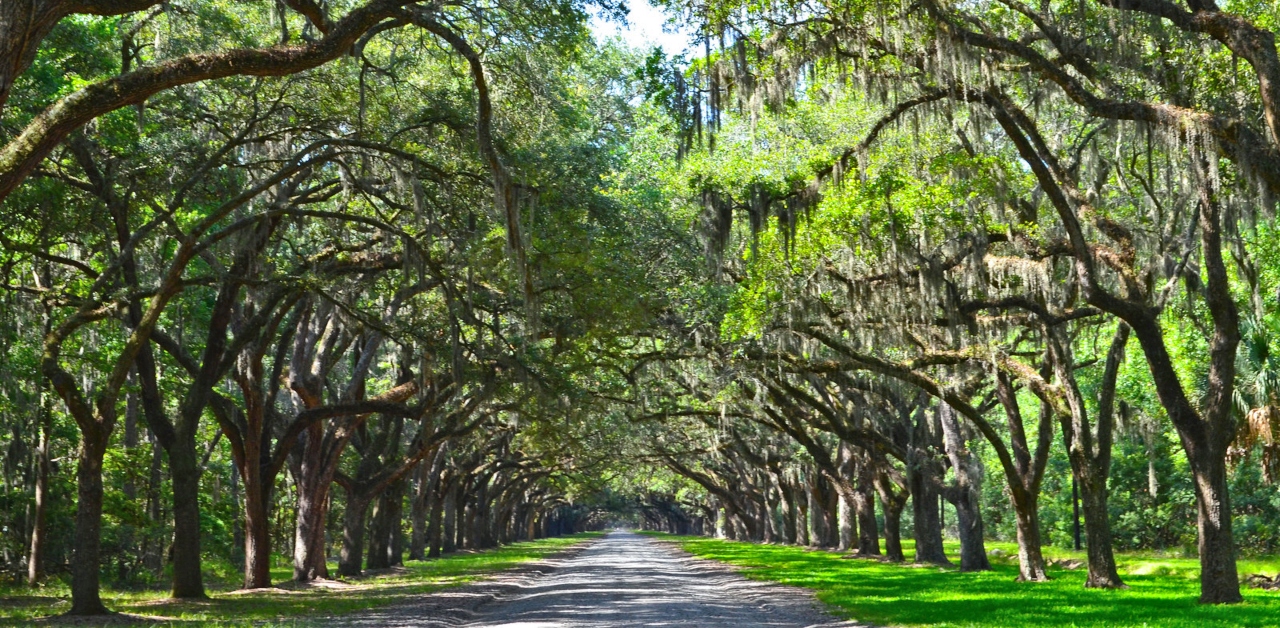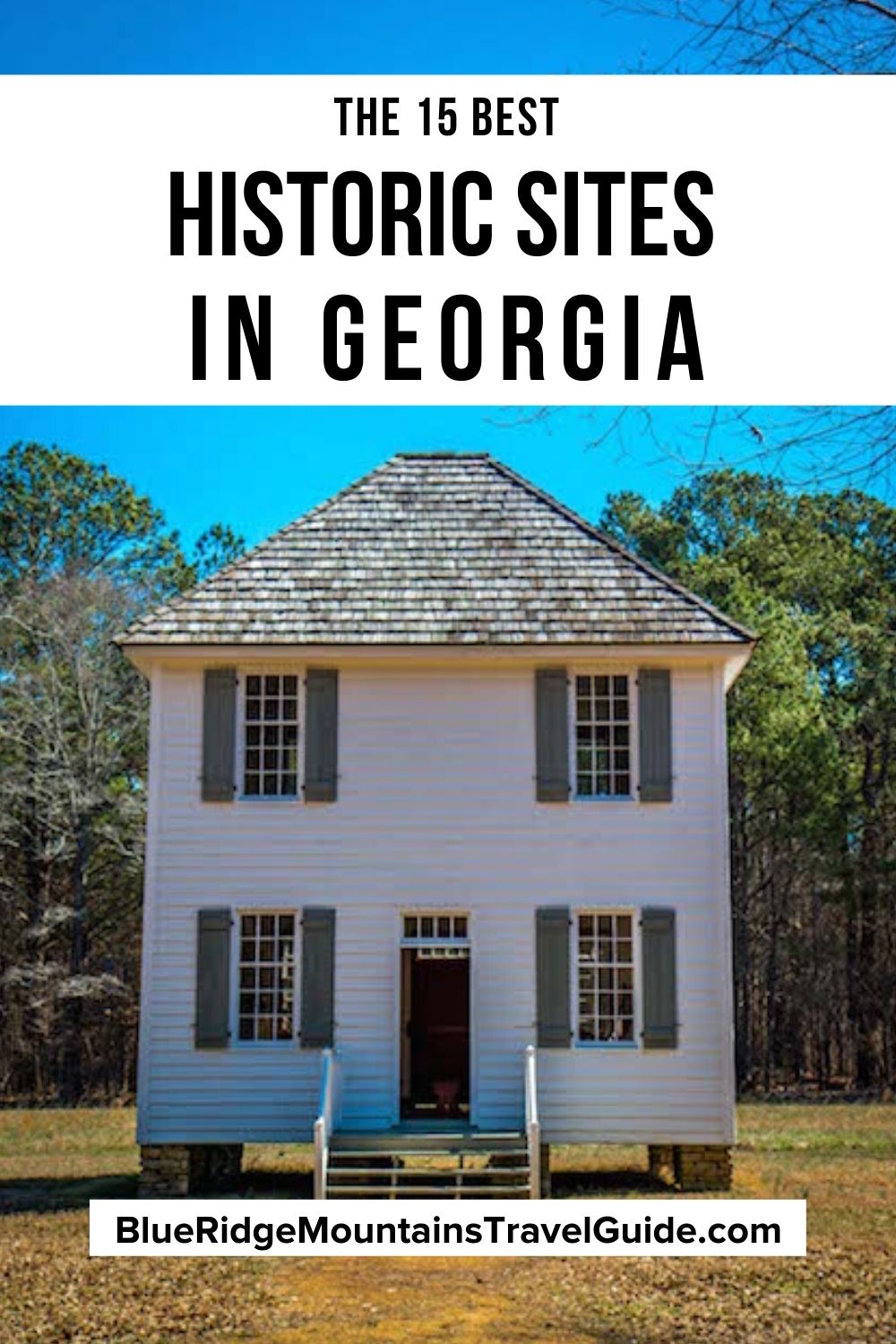[Updated August 23, 2023]
Established as the fourth state after ratifying the United States Constitution in 1788, Georgia has a rich and diverse state history.
The state is known for its sprawling oak trees in Savannah, rolling Blue Ridge Mountains in North Georgia, and a largely agriculture-based economy.
English philanthropist James Oglethorpe first settled the state of Georgia in 1733 for the purpose of shipping raw goods back to London.
A supporter of prison reform, he invited many of the lowest class of colonists to the state, hoping they would begin clearing the way for development.
Georgia has been at the forefront of several wars, being used as a defensive position from Spanish invaders and British soldiers looking to gain a foothold on the coast.
Read on to see our picks the 15 best historic sites in Georgia to visit, from strategic forts and important battlefields to Native American landmarks and a museum dedicated to the Georgia gold rush.
READ MORE: The 15 Best North Georgia State Parks & Historic Sites
The 20 Best Historic Sites in Georgia Guide
- Etowah Indian Mounds State Historic Site
- Dahlonega Gold Museum State Historic Site
- Hardman Farm State Historic Site
- New Echota State Historic Site
- Pickett’s Mill Battlefield State Historic Site
- Traveler’s Rest State Historic Site
- Little White House State Historic Site
- Jarrell Plantation State Historic Site
- Jefferson Davis Memorial State Historic Site
- Chief Vann House State Historic Site
- Fort King George State Historic Site
- Fort Morris State Historic Site
- Hofwyl-Broadfield Plantation State Historic Site
- Wormsloe State Historic Site
- Robert Toombs House State Historic Site
- Chickamauga & Chattanooga National Military Park
- Andersonville National Historic Site
- Fort Pulaski National Monument
- Ocmulgee Mounds National Historical Park
- Martin Luther King Jr. National Historical Park
READ MORE: The 25 Best Places to Visit in Georgia (State)
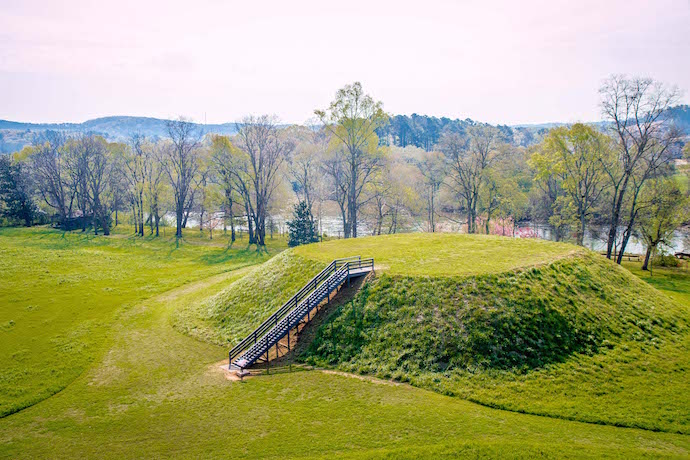
1. Etowah Indian Mounds State Historic Site
The Etowah Indian Mounds in Cartersville GA is one of the oldest historic sites in Georgia. Designated in 1964, the mounds have been dated back to 1000 A.D.
Created by the Mississippian people near the north shore of the Etowah River, the site includes six mounds. The three larger mounds were used for the chief’s residence, a temple, and burial grounds.
After the Mississippian people, the site was inhabited by the Muscogee Creek people, who were pushed out by the Cherokee people in the late 18th century.
Archaeologists determined these dates by looking at the thickness of ceramics found on the site, and markings or other distinguishing features on the clay pots.
Today, visitors to the Etowah Indian Mounds Historic Site can see the original mounds, a handicap accessible museum and gift shop, picnic tables, and riverside benches.
Original fish traps, borrow pits, and defensive ditches around the property can also be seen, as well as a short nature trail lined with wildflowers.
READ MORE: The 15 Coolest Covered Bridges in Georgia
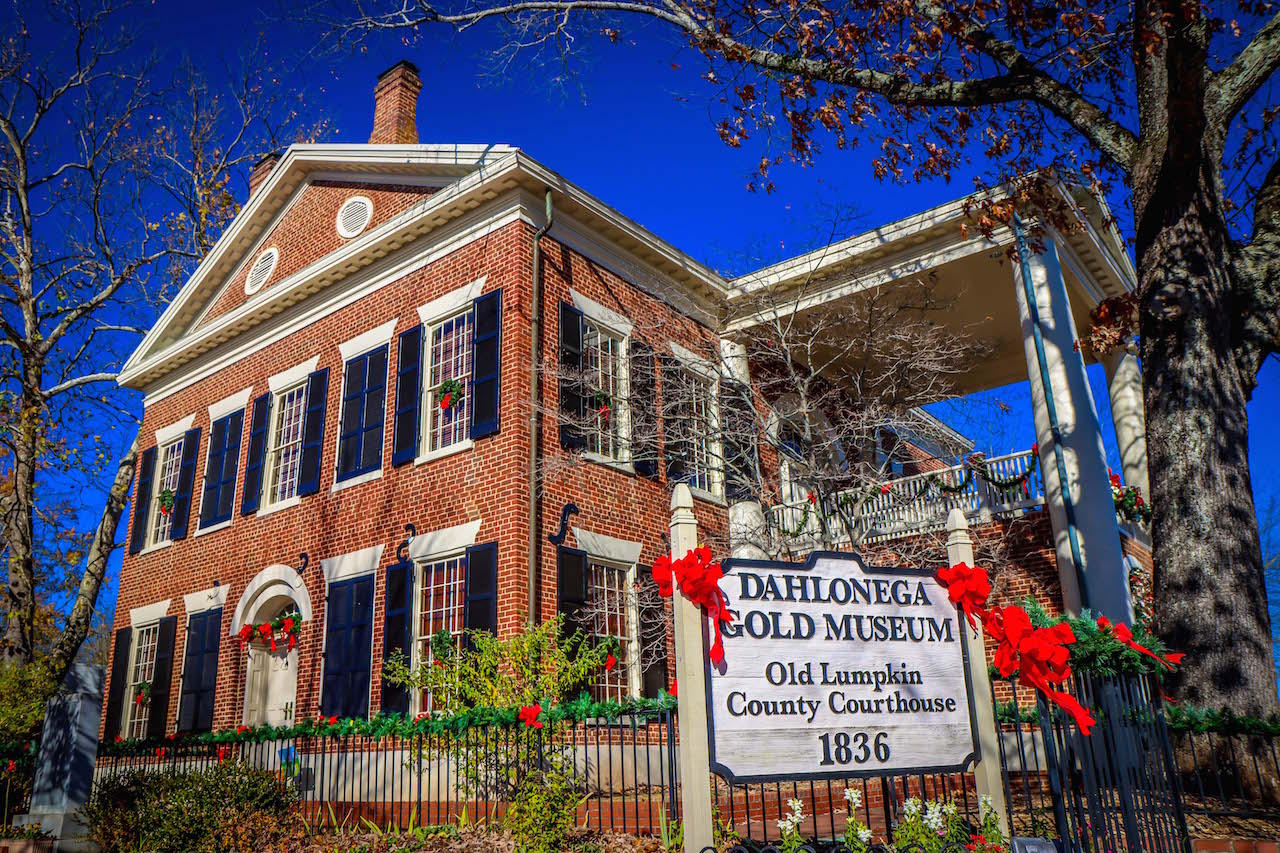
2. Dahlonega Gold Museum State Historic Site
The Dahlonega Gold Museum is one of the most visited historic sites in GA.
The small town of Dahlonega is most famous for being at the center of the Georgia Gold Rush (not to mention some great Dahlonega wineries).
The discovery of gold in Lumpkin County led to an influx of miners seeking their fortune in the North Georgia mountains. By 1830, they were sending hundreds of thousands of dollars worth of gold to the Philadelphia Mint.
The Dahlonega branch of the U.S. Mint was open from 1838-1861, coining over $6 million in gold during its time in operation. A complete set of gold coins minted here in the 1800s can be viewed at the museum today.
The museum also boasts an exhibit featuring a gold nugget weighing more than 5 ounces, as well as a hydraulic cannon and nozzle that were used to blast soil from the surrounding mountainsides.
Visitors to the Dahlonega Gold Museum should note that some exhibits are located on the second floor, making them inaccessible to wheelchairs.
READ MORE: The 15 Best Things to Do in Dahlonega GA & Lumpkin County
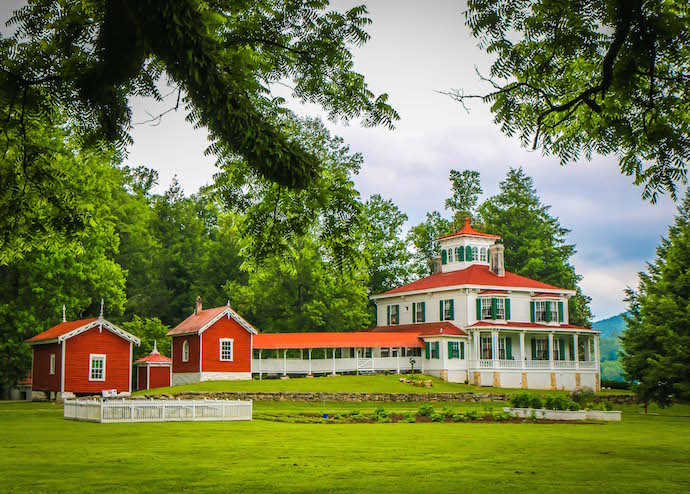
3. Hardman Farm State Historic Site
Located just south of Helen GA, the Hardman Farm State Historic Site was built in the 1870s by Captain James Nichols. The Italianate style house was named “West End” for its position relative to the Nacoochee Valley.
The last owner of the farm was the family of Dr. Lamartine Hardman, who served as the governor of Georgia from 1927 to 1931.
Today, guided tours of the house include the bedroom that once belonged to Nichols’ daughter Anna Ruby, the namesake of nearby Anna Ruby Falls.
Visitors will also get a chance to see the property’s horse barn, cow pasture, and a large dairy barn where milk was processed and transported in the early 19th century.
This historic site in Georgia is also famous for the gazebo-topped Nanoochee Indian Mound, which was used as a burial site. It was likely built and used long before the Cherokee Indians made their way into Georgia.
During the Christmas holidays, living history tours of the property offer a unique opportunity to see what a Christmas in Helen GA might have looked like some 150 years ago.
READ MORE: The 25 Best Things to Do in Helen GA
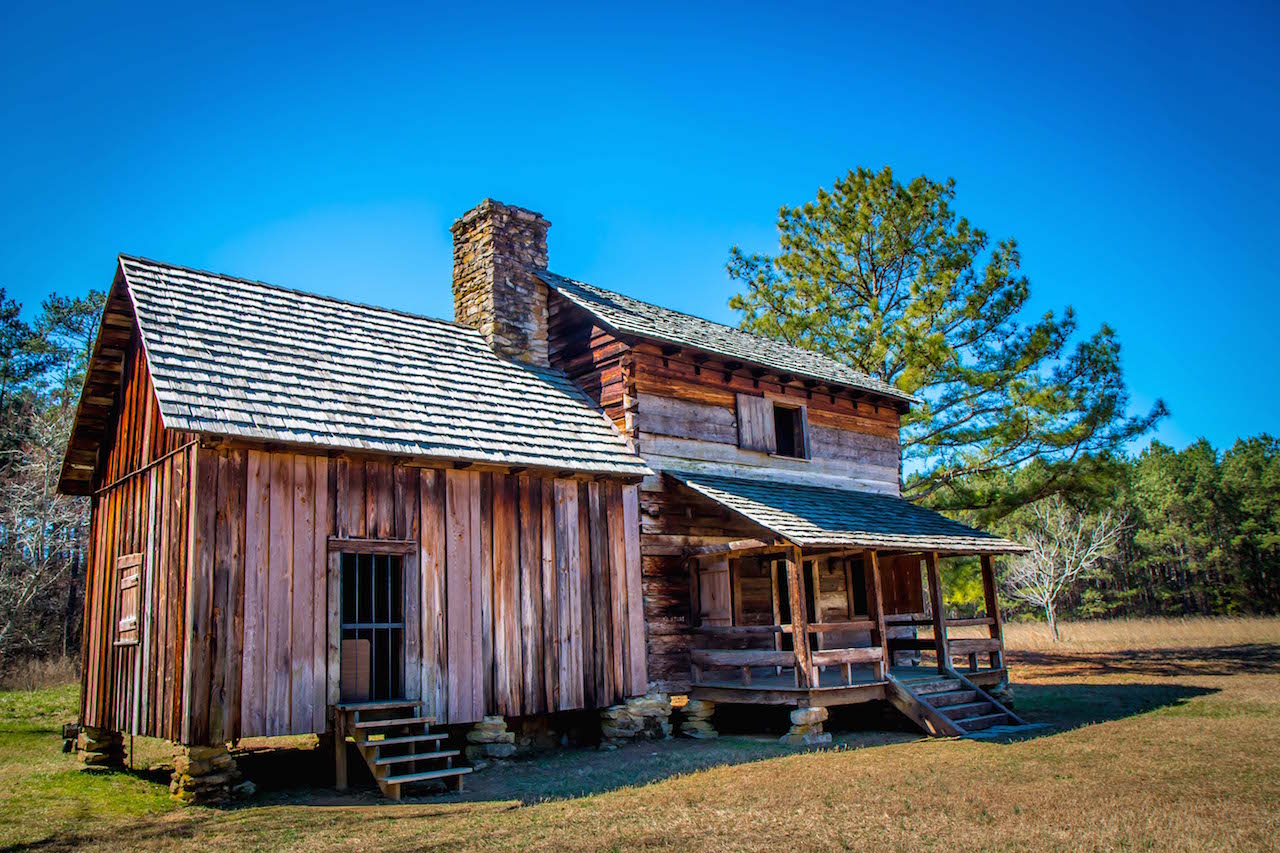
4. New Echota State Historic Site
One of the most famous historic sites in GA, the New Echota State Historic Site is located near the Oostanaula River in Calhoun, Georgia.
New Echota was the site of the tribal capital established by the Cherokee national legislature, and also the site of the first Cherokee newspaper and Supreme Court house.
A faction led by Major Ridge met with U.S. Government officials at New Echota in 1835, ultimately signing a treaty that led to their forced removal of the Cherokee people.
They claimed to represent the entire tribe, but in fact represented an elite minority of less than 500 members.
The Treaty of New Echota is considered to be the beginning of the Trail of Tears. Once it was ratified by the Senate and signed into law by President Andrew Jackson, many Cherokee warriors gathered at New Echota to fight.
Today the Native American historic site includes 12 original and reconstructed buildings, including the Council House, Court House, Print Shop, an Inn, and several private homes.
Visitors can also view interpretive exhibits and purchase souvenirs, or take hiking trails leading to the New Town Creek and a small beaver pond.
READ MORE: The 10 Best Train Rides in Georgia & Georgia Railways Museums

5. Pickett’s Mill Battlefield State Historic Site
Located in Dallas GA (just west of Kennesaw), the Pickett’s Mill Battlefield State Historic Site is one of the most well-preserved Civil War battlefield sites in the United States.
With approximately 765 acres to explore, visitors can learn all about the Confederate victory that delayed the Union’s advance into Atlanta.
The Union Army, led by General Howard, made an attempt to circumvent the Confederate Army. But 10,000 Confederate troops, led by General Cleburne, laid in waiting at the site of Pickett’s Mill.
Over 14,000 Union troops met the Confederate soldiers on the battlefield on May 27, 1864. The bloody battle lasted well into the night, but the Confederate Army managed to maintain their position.
Visitors to the historic site today can see roads used by troops, earthen works constructed by the soldiers, and a ravine where hundreds of soldiers died.
A museum, pioneer cabin, 4 miles of hiking trails, group shelter, and picnic tables are also available.
READ MORE: The 25 Best Day Trips From Atlanta GA

6. Traveler’s Rest State Historic Site
Built in 1815 by James R. Wyly, the Traveler’s Rest State Historic Site in Toccoa GA is the preserved site of a stagecoach inn and plantation.
Wyly built the inn along the Unicoi Turnpike, a well-travelled highway in the Appalachian Mountains close to the border with South Carolina.
Miners flocking to the state during the Georgia Gold Rush likely stopped at Wyly’s inn before heading further to Dahlonega.
In 1833, Wyly sold the inn to his neighbor, Devereaux Jarrett, who combined it with his existing plantation to double its size. The once quaint inn became a 14,400-acre plantation along the picturesque Tugaloo River.
The property stayed in the Jarrett family for more than a century before being purchased by the state of Georgia in 1955. It was officially designated as a Georgia historic landmark in 1964.
This Georgia historical site includes the inn and plantation buildings, as well as many of the original antique furnishings. The inn features 6 chimneys, a post office, and beautiful quilts in the guest rooms.
While the inn is sadly no longer in service, it is open for self-guided tours 7 days a week. The museum is also open, and often houses temporary exhibits.
READ MORE: The 40 Best North Georgia Cabins to Rent

7. Little White House State Historic Site
Located in Warm Springs GA, Franklin D. Roosevelt’s Little White House Historic Site preserves his mountain home exactly as he left it.
After being diagnosed with polio at the age of 39, FDR often visited the small town of Warm Springs. He was looking for alternative treatments, and the area’s natural hot springs helped to improve his condition.
He had the Little White House built in 1932, while he was still serving as Governor of New York. One year later, he defeated Herbert Hoover in one of the most massive landslide presidential victories in U.S. history.
Warm Springs also served as inspiration for some of FDR’s New Deal programs, like the Rural Electrification Commission. (He also came up with the idea for the Blue Ridge Parkway.)
Today, the Little White House Historic Site includes a museum with mementos from FDR’s life, including his 1938 Ford convertible (complete with hand controls), his stagecoach, and a 1930s radio playing his Fireside Chats.
Another popular attraction at the museum is the “Unfinished Portrait.” While sitting for the portrait, Roosevelt suffered an intra-cerebral hemorrhage that ultimately led to his death in 1945.
READ MORE: The 10 Best National Parks in Georgia to Visit

8. Jarrell Plantation State Historic Site
One of many historic plantations in Georgia, the Jarrell Plantation State Historic Site in Juliette was owned by the Jarrell family for more than 140 years.
John Fitz Jarrell built the plantation in 1847, and later added many of the original furnishings seen in the home today.
The cotton plantation, which was one of many middle-class cotton farms in the area, was once worked by nearly 40 enslaved African workers.
After the Civil War, they continued to work the land as free men, and Jarrell increased the size of his farm to over a thousand acres.
After John’s death in 1884, his son, Dick Jarrell, returned home to take over the farm operations.They were now primarily producing sugarcane, and he expended the farm to include a sawmill, cotton gin, and more.
Today you can also see a second home, barn, and other remnants of the plantation, as well as the Griswoldville Battlefield, a 17-acre site where the Battle of Griswoldville occurred on November 22, 1864.
READ MORE: Appalachian Folklore, Monsters and Superstitions

9. Jefferson Davis Memorial State Historic Site
The Jefferson Davis Memorial State Historic Site marks the spot where Confederate President Jefferson Davis was arrested after the Civil War.
One month after he fled from Richmond, Virginia, Union troops caught up to Davis and his family outside Irwin County, Georgia. They were camping in the forest, heading west in hopes of regrouping the Confederate Army.
Davis was ultimately brought back to Virginia, where he was charged with treason and held for 2 years before being released.
The land was donated to the state of Georgia by Judge James Clements, whose father had purchased the land to keep it out of Yankee hands.
Located in the small town of Fitzgerald, the Georgia historic site features a large granite monument below a bronze bust of Jefferson Davis.
A Civil War Museum, gift shop, nature trail, playground, and group shelter are also available to visitors.
READ MORE: The 10 Best State Parks With Cabins In Georgia
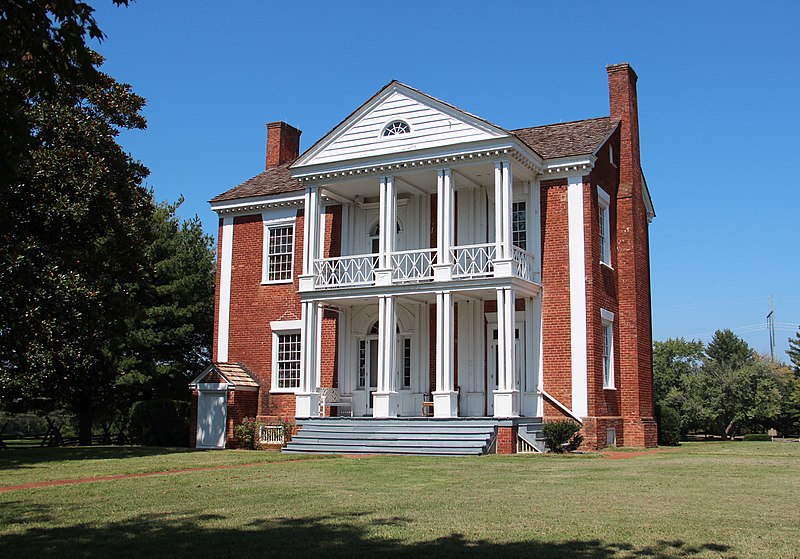
10. Chief Vann House State Historic Site
The Chief Vann House, one of the oldest structures in the North Georgia Mountains, was owned by the Cherokee Chief James Vann back in the 1790s.
After Vann was murdered in 1809, the house was passed on to his son, who also became a Cherokee leader. The family lost their home in the 1830s, when the Cherokee Nation was forced west.
The house was both the first brick home and the largest plantation in the entire Cherokee Nation. Hand carvings, a floating staircase, a 12-foot mantle, and period antiques are all showcased in the 2.5-story home.
Don’t miss the beautiful seasonal gardens at the Chief Vann House, which burst with color in spring and fall.
The GA historic site also offers seasonal exhibits with varying themes, including historic maps of Georgia, handwoven baskets, and quilting.
Visitors should note that the museum and grounds are ADA-accessible, but the historic buildings are not.
READ MORE: The 15 Best Things to Do in Ellijay GA & Gilmer County

11. Fort King George State Historic Site
The Fort King George State Historic Site in Darien GA is the oldest English fort remaining on the Georgia coast.
Built in 1721 along the Darien River, the fort served as the Southern outpost of the British Empire from 1721 to 1726. At that time, the British were fighting Spain and France for control of the Southeastern US.
Due to its position, Fort King George was largely staffed by The Independent Company of South Carolina.
Made up of 100 elderly foot soldiers, the company experienced starvation, alcoholism, desertion, mutiny, and various camp diseases during their trying time at the fort.
After the British left, the fort was settled by General James Oglethorpe, who had the fort taken apart in 1738. It was later reconstructed by the state of Georgia and turned into a protected historic site.
Today, the Fort King George grounds include a moat, guardhouse, barracks, and more, all of which are available for year-round tours and educational programs.
READ MORE: 15 Fun Activities Where You Can Experience Fall in Georgia

12. Fort Morris State Historic Site
Located about 40 minutes south of Savannah in Midway GA, the Fort Morris State Historic Site occupies a strategic spot on the Medway River that was perfect for defending southern Georgia.
The fort was constructed, torn down, reconstructed, added to, and abandoned at various times throughout the 18th century.
It was used in the French & Indian War, the American Revolution, the War of 1812, and the Civil War.
After the signing of the Declaration of Independence, the fort was used to keep British troops out of Georgia. They demanded the 200 troops surrender, but American Colonel John McIntosh told them to “come and take it!”
The site fell when the British returned 45 days later: They renamed it Fort George for the 8 months they held it. The Brits eventually left the site, and it wasn’t used again until the War of 1812.
Facilities at the historic site today include a visitor’s center, nature trail, campgrounds, and picnic area. Historic events are also held there annually on Labor Day and at Christmas.
READ MORE: The 10 Best Christmas Towns in Georgia to Visit

13. Hofwyl-Broadfield Plantation State Historic Site
The Hofwyl-Broadfield Plantation State Historic Site is one of the most popular historic sites near Savannah GA.
Located in Brunswick, the historic site is just 1 hour south of Savannah, near Cumberland Island.
At its peaks, the massive 7,000-acre rice plantation was worked by over 350 enslaved Africans.
After the death of its original owner, William Branford, the plantation passed down through his family. By the time the Civil War ended, the property had lost most of its value, and was converted into a dairy farm.
Now mostly marsh land, the property is surrounded by sprawling, moss-covered oak trees. There are 4 miles of hiking trails surrounding the park, which is a popular spot for bird watchers.
Facilities at the site include a museum, visitor’s center, and gift shop.
READ MORE: The 25 Best Easy Hiking Trails to Waterfalls in Georgia

14. Wormsloe State Historic Site
The Wormsloe State Historic Site in Savannah GA is home to some of the most beautiful oak trees in the state.
The historic site is best known for its iconic entrance, which has a beautiful avenue canopied by Spanish moss-covered oak branches.
The site also features the remains of the historic home of Noble Jones. He was one of the first settlers in Georgia, where he worked as a judge, surveyor, Royal Councilor, doctor, constable, and Indian agent.
The coastal Georgia house also served as one of many defensive structures meant to protect the area from Spanish invaders. It was constructed from tabby, a building material made from lime and oyster shells.
After Jones’ death, the Wormsloe home eventually made its way to his grandson, George Jones. George built a larger plantation house, which is the home that’s still standing here today.
The site consists of the ruins of the original home, museum, gift shop, oak avenue, walking trail, and picnic area.
READ MORE: The 10 Best Campgrounds in North Georgia
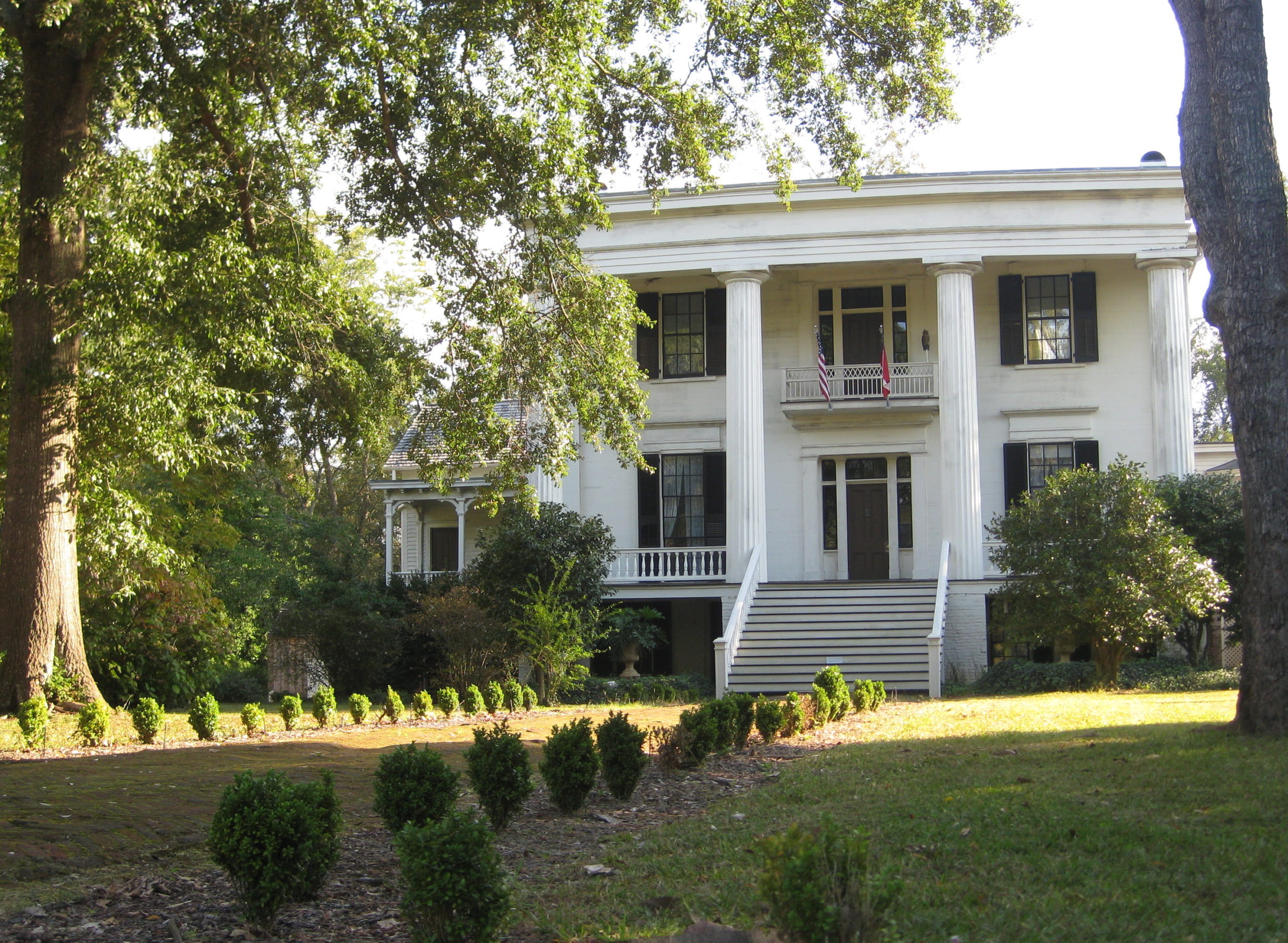
15. Robert Toombs House Historic Site
The Robert Toombs House Historic Site in Washington GA preserves the home of lawyer-turned-Senator Robert Toombs.
Known for his temper and disheveled appearance, Toombs was a staunch supporter of slavery. He often loudly defended his position in the Senate, where he fought to preserve his ideals before the Civil War.
Toombs served at Secretary of State for Jefferson Davis before resigning over not being chosen as President of the Confederacy. Officials feared that his alcoholism and lack of diplomatic skills would pose a problem.
His loud opposition to many Confederate government decisions eventually lead to a warrant for his arrest. He escaped his captors and fled to Paris in 1865. He returned two years later, but never held public office again.
Today, the Toombs House Historic Site includes a museum, offering customized tours and educational programs to visitors.
READ MORE: The 15 Best Lakes in Georgia to Visit

16. Chickamauga & Chattanooga National Military Park
The 9,523-acre Chickamauga & Chattanooga National Military Park is located on Lookout Mountain, near the border between Georgia and Tennessee.
This park protects the site of two important Civil War battles, the Battle of Chickamauga and the Siege of Chattanooga. The Battle at Chickamauga was the second bloodiest of the war, with 20% of the Confederate side killed in action.
When the Union Army retreated to Chattanooga, the Confederacy followed in pursuit.
The Rebels attempted to starve them out, but a “Cracker Line” was created through the river, and once again the Union emerged victorious.
Visitors to the park today can enjoy activities such as hiking, biking, horseback riding, taking ranger-led tours, and exploring two visitor centers with informative exhibits about the battles.
READ MORE: The 15 Best Things to Do in Lookout Mountain GA/TN

17. Andersonville National Historic Site
The Andersonville National Historic Site was a brutal POW camp during the Civil War. Known as Camp Sumpter, it was the largest military prison of its era, with 45,000 Union soldiers held in a terribly overcrowded space.
It was essentially just a barren lot, so prisoners would often dig burrows in the ground to escape the elements.
Inmate death at Camp Sumpter from sicknesses (dropsy, dysentery, scurvy, and other diseases of the time) was common, and around 13,000 men died there.
Ruins of the prison’s wooden structure remain to this day, as well as haunting monuments and a cemetery for those who died at the prison (as well as other service members who passed away over the past 150+ years).
Exploring the historic site can be a harrowing experience, and the nearby National Prisoner of War Museum is a great place to learn more about Camp Sumpter’s disturbing past.
READ MORE: 8 Civil War Battlefields in Georgia to Visit
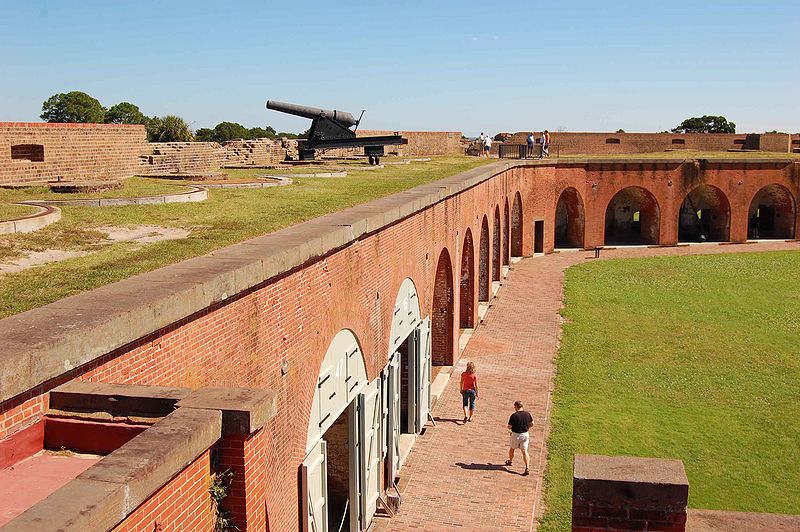
18. Fort Pulaski National Monument
Built in 1861 on Cockspur Island near Savannah, the Fort Pulaski National Monument offer visitors a lot of fascinating history to explore.
Fort Pulaski started out as a Confederate Fort. But in 1862 it was taken over by the Union Army, who used rifled cannon fire to compel the Confederate garrison to surrender.
They quickly repaired it, and Union control of the fort ultimately cripple the Confederate Army, who could no longer use the waterways of the Georgia coast.
The Fort has been open to the public off and on since just before the beginning of WWII. In the 1980s, a museum was opened to help tourists understand this Fort Pulaski’s historical significance.
Other things to do near the fort include hiking trails such as the North Pier Trail, the Lighthouse Overlook Trail, and the McQueen’s Island Rail to Trail.
READ MORE: 30 Fun Facts About Appalachian Scots-Irish History & Culture

19. Ocmulgee Mounds National Historical Park
Located in Macon GA, the Ocmulgee Mounds National Historical Park has evidence of 12,000 years of consistent human habitation.
There were two Civil War battles fought on this land, the Battle of Dunlap Hill (which was part of Stoneman’s Raid) and the Battle of Walnut Creek.
In the 1930s, the largest archeological dig in America uncovered thousands of historic artifacts, some of which can still be seen in the park’s museum.
Today the park’s famous Indian mounds are covered in native grasses. Every year there are Ocmulgee Indigenous Celebrations held in September, remembering the history of the land and the indigenous people who lived there.
In addition to the museum, there’s also an earth lodge and a grand temple mound to explore.
READ MORE: 6 Incredible Indian Mounds in Georgia to Visit

20. Martin Luther King Jr. National Historical Park
The 35-acre Martin Luther King Jr. National Historical Park encompasses several places that were instrumental to MLK’s life in Atlanta GA.
It includes his boyhood home and church, as well as the graves of Martin Luther King Jr. and his wife, Coretta.
Martin Luther King Jr. was born in a time of segregation, but he was a dreamer who would become the most well-known and beloved leader in the Civil Rights movement.
This park serves as a landmark honoring his incredible influence, whose messages still resonate just as powerfully as ever today, 55 years after his tragic assassination.
Other important places to visit here include the “I Have a Dream” World Peace Rose Garden, the Behold Monument, Fire Station No. 6, the International Civil Rights Walk of Fame, the King Center, and Prince Hall. -by Amy Lewis and Chloe Burgette; lead image of Jarrell Plantation Historic Site via GaStateParks.org

